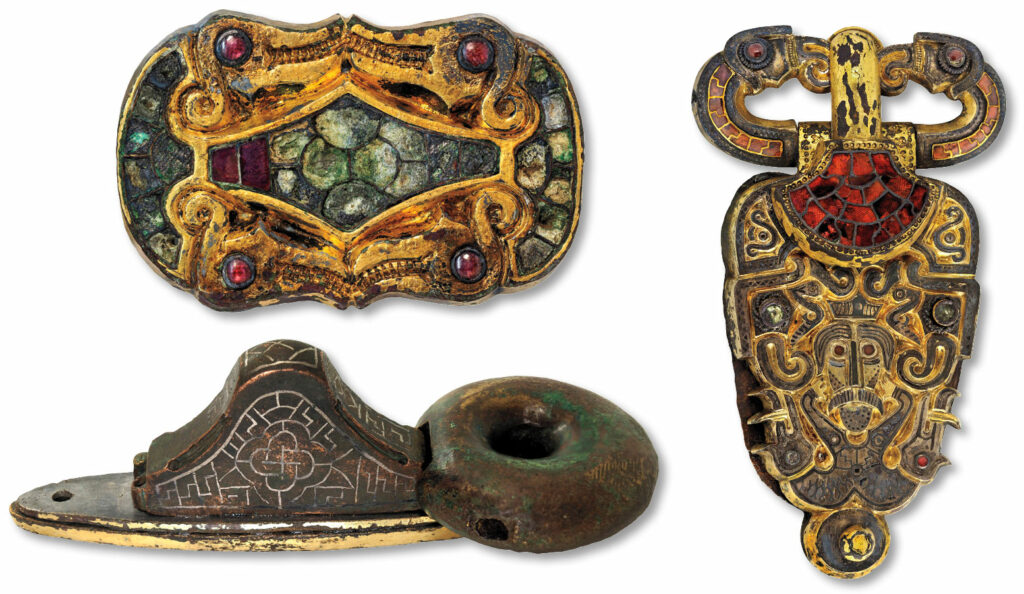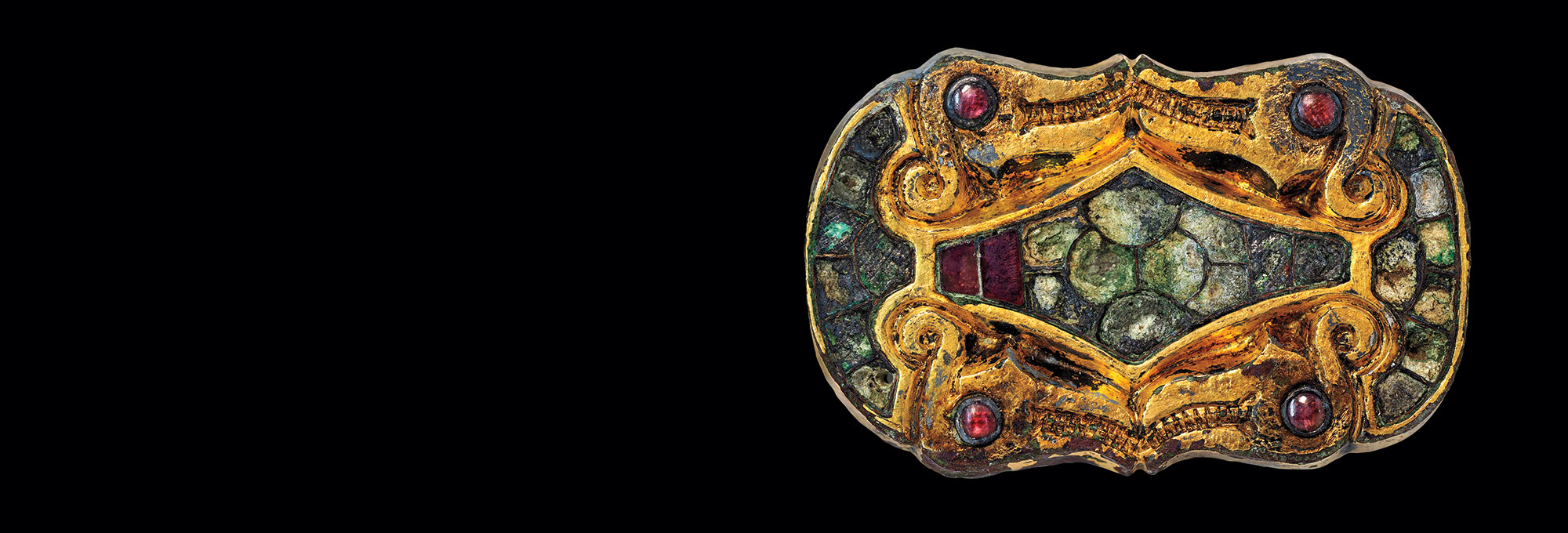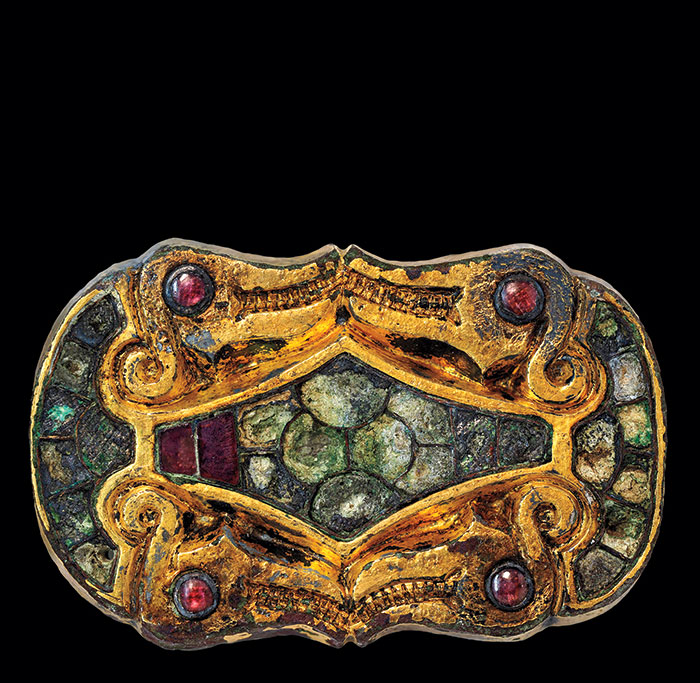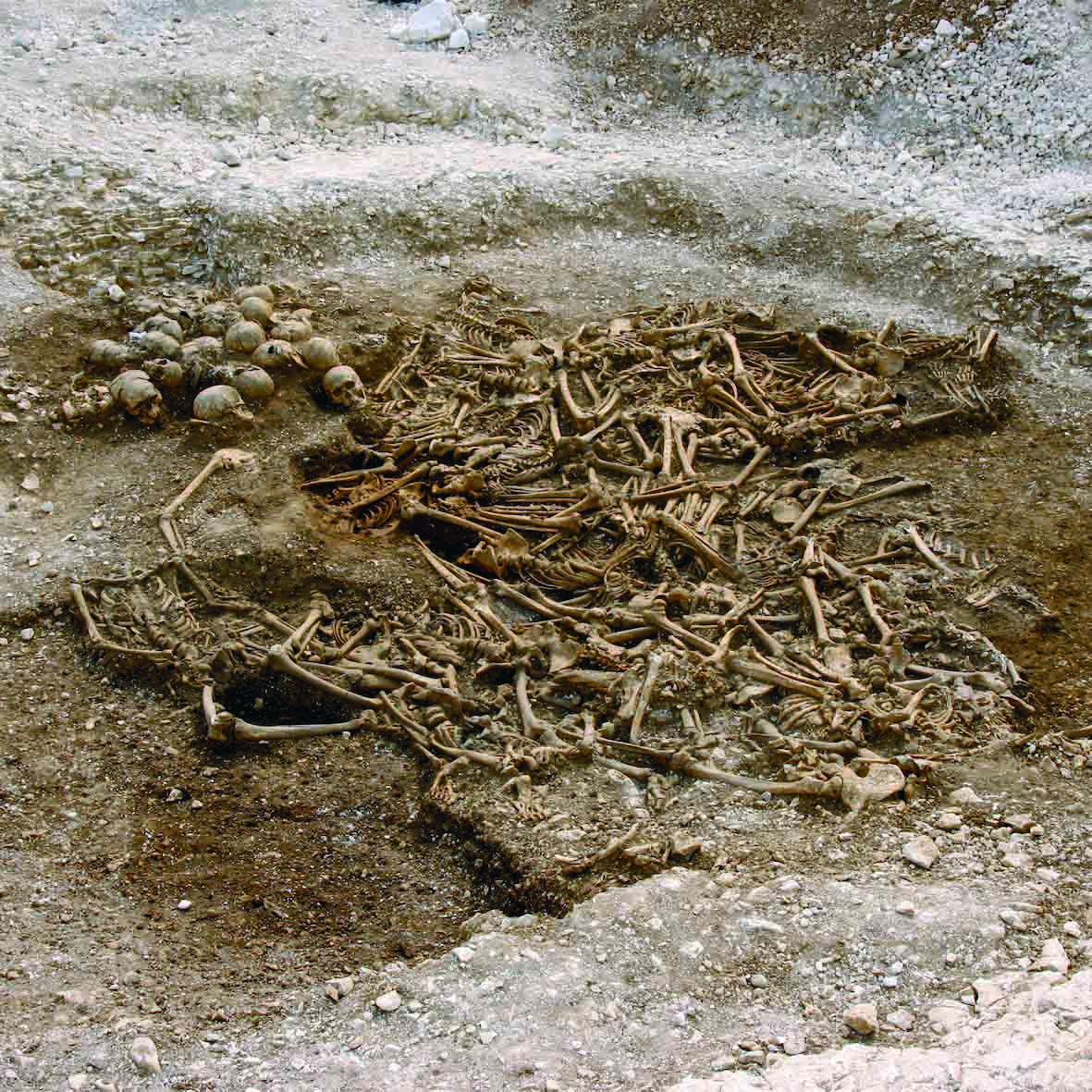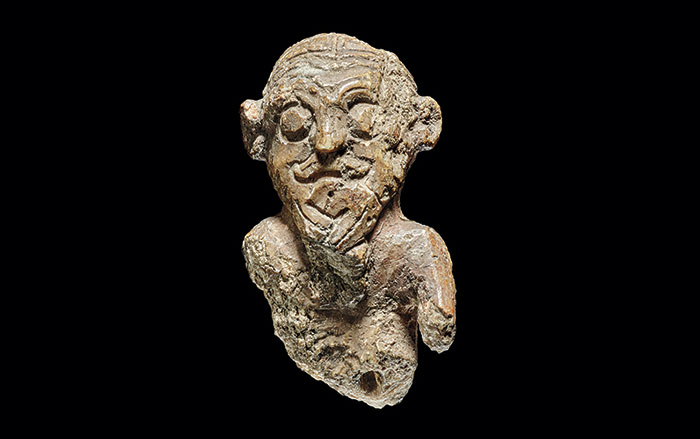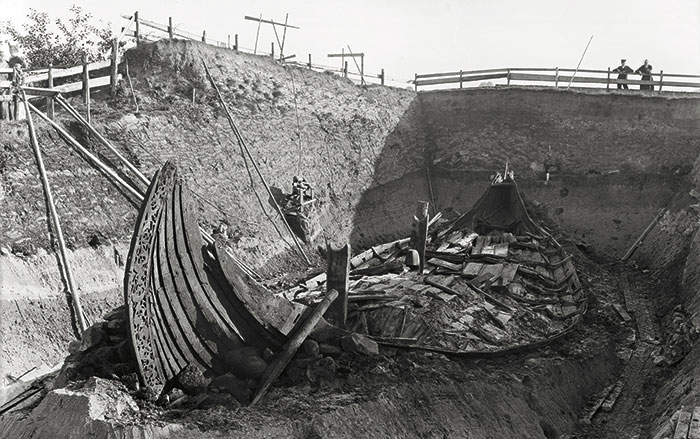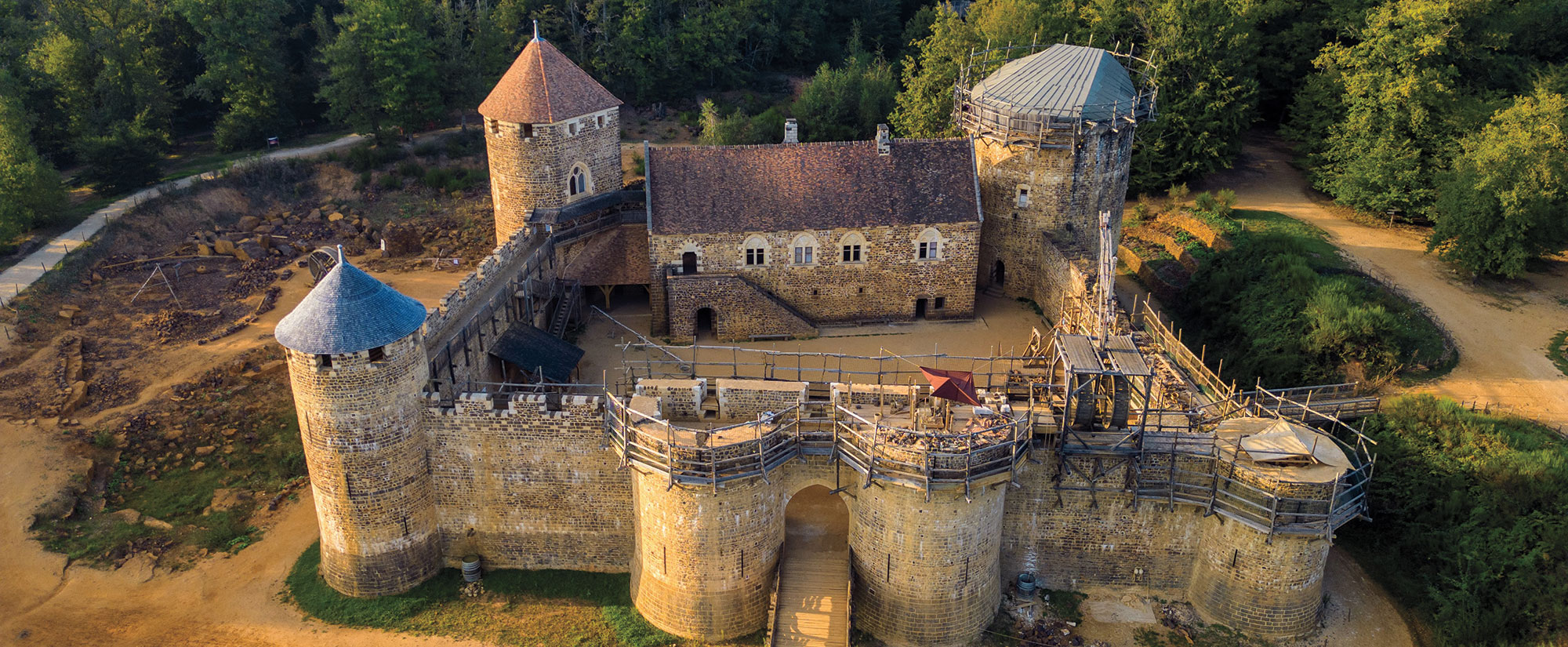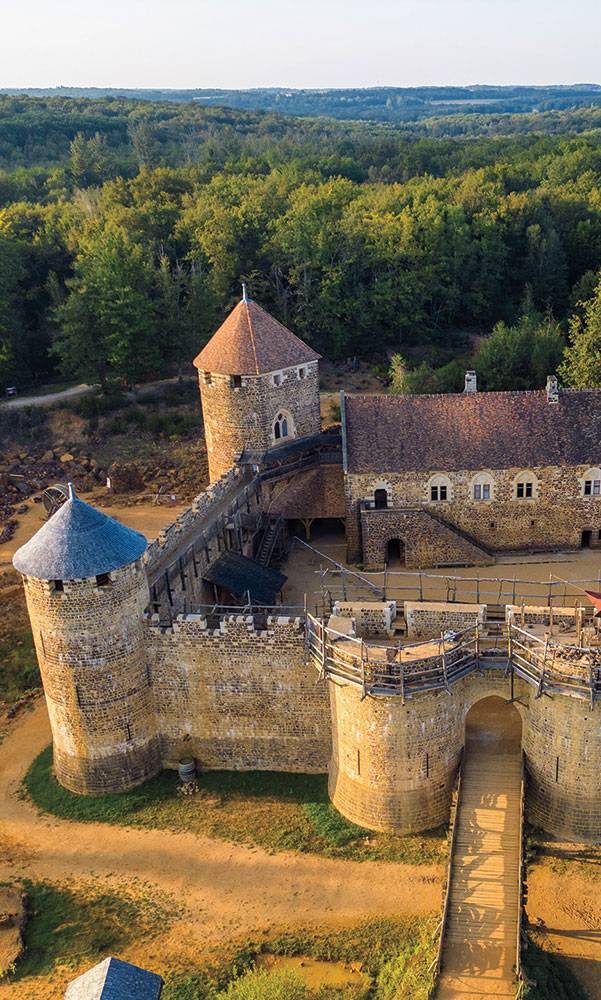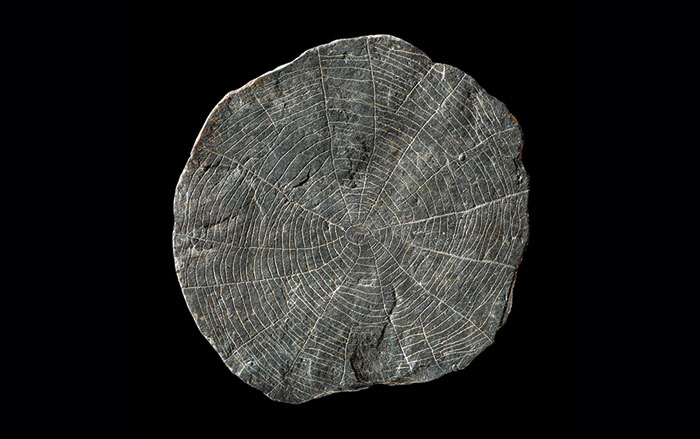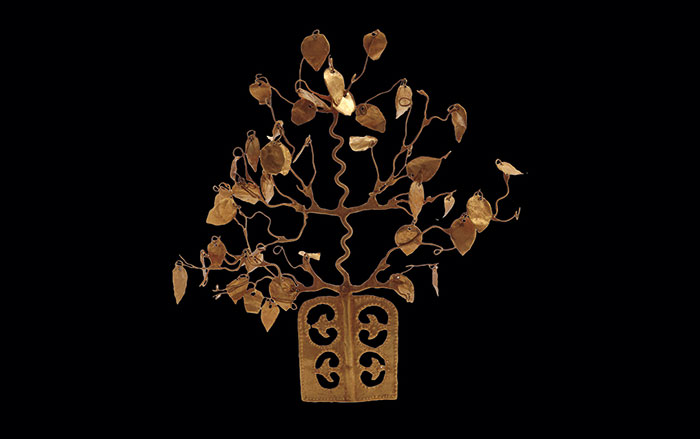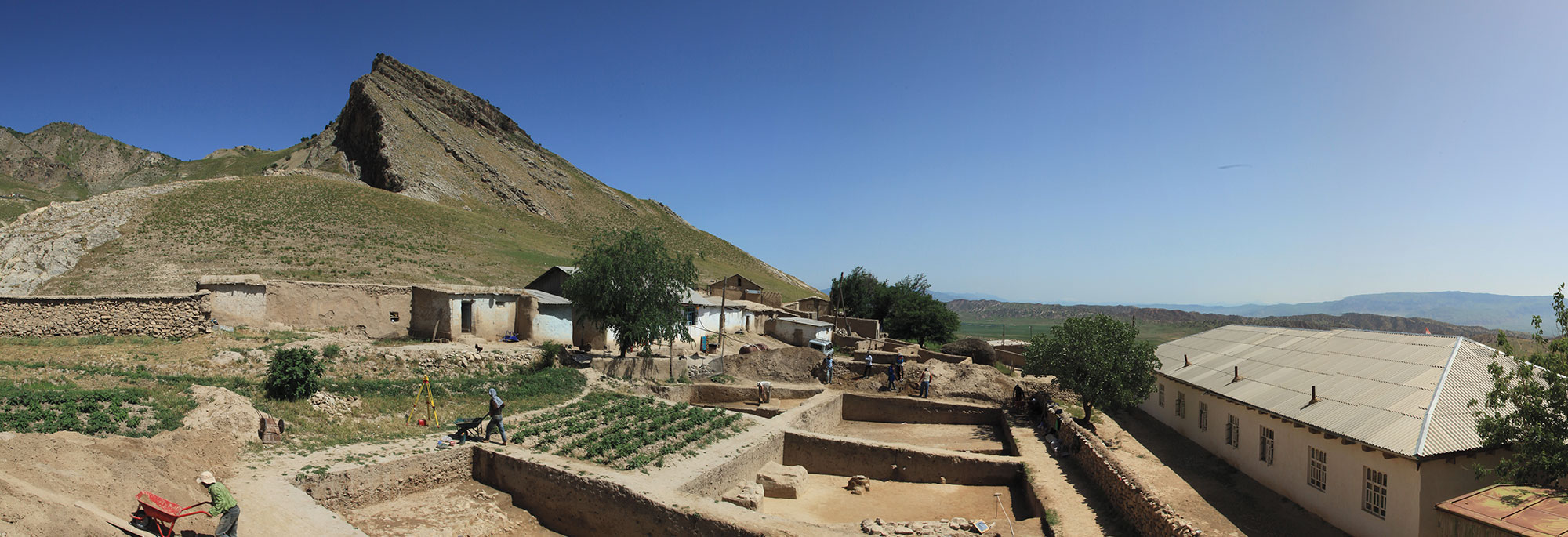
Archaeologists are unsure how a collection of weapons and other valuable objects found its way to a farm in southeastern Norway around a.d. 600. The first artifacts in the cache, which is known as the Åker assemblage, were unearthed in present-day Innlandet County between 1868 and 1912. These include shield mounts and a sword pommel, as well as a buckle decorated with a colorful cloisonné depiction of a man’s face. The objects were dated to the Merovingian period (ca. a.d. 550–800) and were once thought to have originated in Anglo-Saxon England or continental Europe.
Another set of artifacts ascribed to the assemblage was discovered in the 1990s. According to archaeologist Ingunn Marit Røstad of the University of Oslo’s Museum of Cultural History, analysis of these items suggests they were produced in a local Scandinavian workshop. Many of the objects share features such as decorative punch marks and patterns on gold foil that indicate they were created by the same artisans. Some are adorned with higher-quality depictions of animals than are usually seen on artifacts from continental Europe. Other items do display attributes of typical continental European styles. For instance, while several box-shaped belt mounts incorporate gilding commonly found in Scandinavia, they also use a technique called niello employed in continental Europe. “Niello involves a black silver alloy used as fill in engravings to create a striking contrast to the shining metal surfaces of silver and gold,” says Røstad. She believes the cache may have been a gift given by members of society’s upper strata as part of their system of childcare. “Written sources from the continent and England record how upper echelons would foster each other’s children,” Røstad says. “It was an assurance that children would be looked after in an insecure world.”
